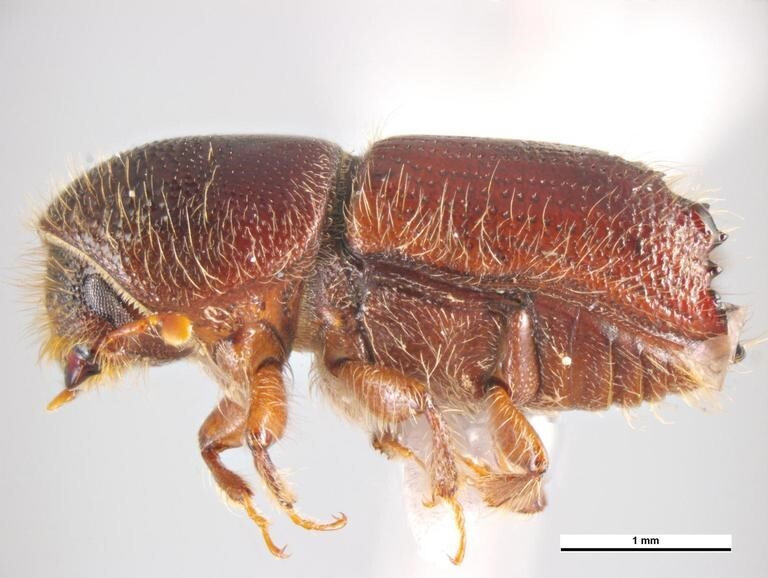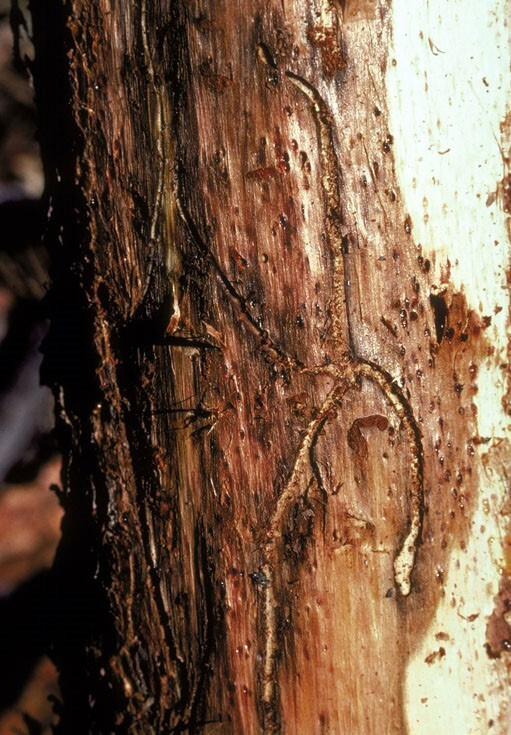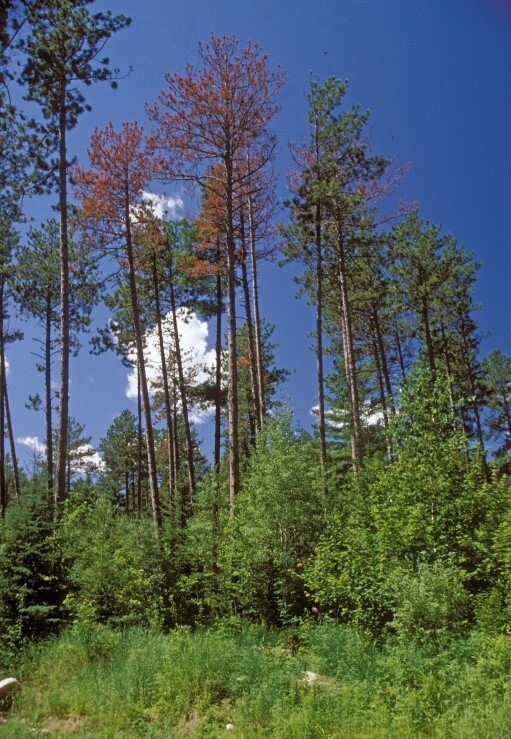Engraver Beetles (Ips spp.)

Figure 1. Ips pini adult. Photo by K. Walker, Museum Victoria, Bugwood.
Hosts
Pine and spruce trees.
Damage and Symptoms
Dieback at the top of the tree is evident with Ips beetle infestations (but this can also be confused with many abiotic-related issues). At the base of the tree, the beetles leave a yellow or reddish/brown dust from boring activity. Shot-hole sized exit holes are evident on the outside of the bark. Galleries from larval feeding are apparent just below the outer bark.
Life Cycle
Adults overwinter underneath the bark. The larvae create galleries surrounding egg-laying areas. There can be up to four generations per year.
Management
Once Ips beetles are in the tree, it is hard to kill the beetle and to correct the damage. Beetles can potentially be prevented from infecting other trees. Preventive contact insecticides can be sprayed on the trunk of the tree prior to future beetle infestations or to protect surrounding healthy trees.

Figure 2. Galleries from Ips beetles. Photo by S. Tunnock, USFS, Bugwood. Larger image (178KB).

Figure 3. Pines damaged by Ips beetle infestations. Photo by S. Katovich, Bugwood. Larger image (212KB).
Further Information
To learn more about the topics discussed on this page, contact the Schutter Diagnostic Lab. If you suspect an infestation on your property, contact your local extension agent, the Schutter Diagnostic Lab at Montana State University, or the Montana Department of Agriculture.
This fact sheet is also available as a printable PDF (551KB).
Disclaimer: These recommendations are provided only as a guide. It is always the pesticide applicator’s responsibility, by law, to read and follow all current label directions for the specific pesticide being used. The authors and Montana State University assume no liability resulting from the use of these recommendations. The Montana State University Extension Service is an ADA/ EO/AA/Veteran’s Preference Employer and Provider of Educational Outreach.
